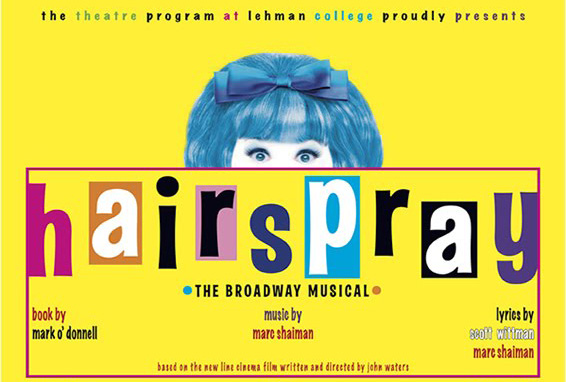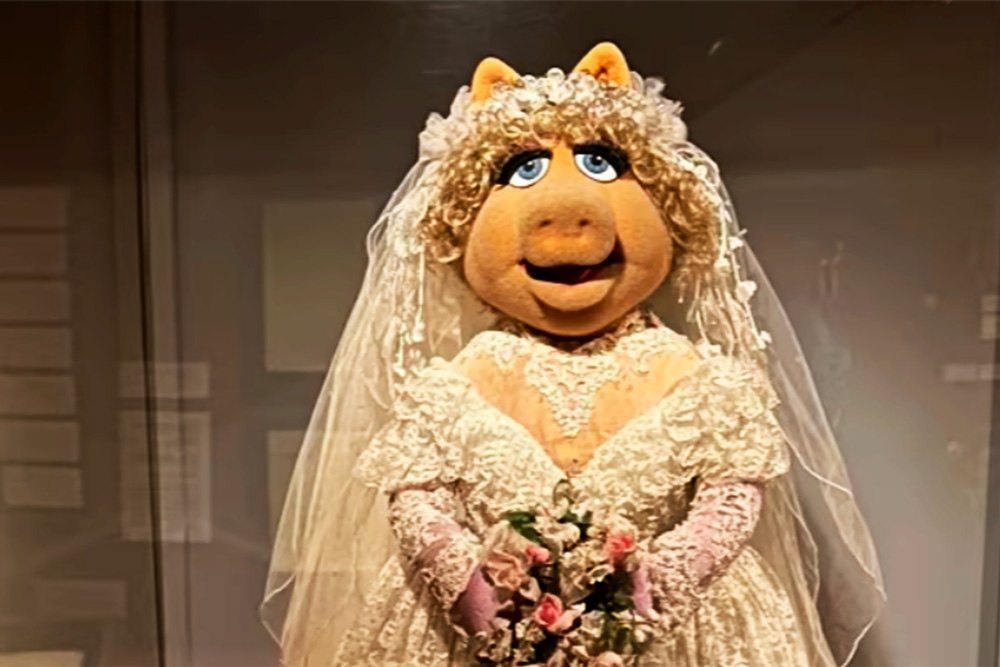By Delbert Browne
When I think of the musical Hairspray, I think of a caged bird. The caged bird sings out loud “Whoa momma, welcome to the 60s.” The bird dances a magnificent dance, and puts on a colorful, vibrant spectacle because it wants to be set free and heard.
In the recent Lehman College production of Hairspray, after all was said and done, the bird was still locked in the cage, captive, and unheard.
The world-renowned musical starred Lehman students and was directed by Tim Cusack during a four-day run at Lehman College’s Lovinger Theater.
The play began with Tracy Turnblad, the show’s protagonist, introducing the audience to her world, which takes place in a racially segregated Baltimore, Maryland, circa 1962. She is very adamant about appearing on a variety television show, The Corny Collins Show, in which children in an around her neighborhood, dance.
Because she is overweight, Turnblad is discouraged from appearing on the show by her own mother, Edna, her peer, Amber VonTussle, and Amber’s mother, Velma VonTussle, who produces Corny Collins.
Her powerful desire, however, to desegregate the dance ensemble to include black dancers as part of the regular programming puts Turnblad through many trials and tribulations before she ultimately succeeds. In effect, she “saves the day.”
I do commend the production team, staff and students for putting on a show with the very small budget provided. As an actor myself, I understand that it is very difficult to put on a show in six weeks, regardless of the budget.
However, I feel that artistic liberties taken in this production were not the best decisions to make.
Hairspray was set in 1962 Baltimore, at the height of the Civil Rights movement. The very location and time of the play alone dictates the cultural significance of the play’s plot and its resolution’s impact.
Let me explain. Casting in the acting profession is delicate, and at times, controversial. For instance, the role of Dorita Evita Perez in the 1995 film The Perez Family called for a Latina. The role went to Marisa Tomei, a non-Latina, prompting an outcry from various Latino groups.
Yet, what happens when minority actors are cast in roles defined for white characters?
This is the question that was raised for me when I saw Lehman’s production of Hairspray.
The actions of Tracy, who is white, and her friends, who are mostly African American, would be considered monumental and groundbreaking. In cannot say that this message was conveyed in this production for many reasons.
Although casting along appropriate racial lines may have been limited to availability factors, the heart and tone of the play was lost. This was clearly apparent in the “(It’s) Hairspray” number, where a brown-skinned female (who could not be mistaken as Caucasian) appeared on stage with the “white” ensemble as “white.”
For me, it was a “what is wrong with this picture” moment when a brown-skinned female was cast in a Caucasian role that was set in the United States in 1962, at the peak of social strife. She was unrealistically cast.
Another casting faux pas was when Tracy’s father, Wilbur Turnblad, started speaking Spanish in the “(You’re) Timeless To Me” number. Wilbur Turnblad’s character description there is no indication of him knowing Spanish. These two scenes, and other instances, made the play more of a farce than reality put to music.
In this day and age, artists like to think out of the box and not adhere to convention. Although this was done with good intentions, Hairspray was not the wisest choice for the Lehman College student body. A race neutral show, such as Into The Woods, a montage of Grimm fairy tales, would have been better suited.
In addition to casting, there were certain technical things that could have been changed to better the space for the actors, the band, and the audience. The structure of the set was not ideal for a musical. The band was in front of the audience, literally.
Consequently, the music drowned the actors’ voices out, especially those without microphones. Some of the blocking (positioning of actors) prevented the audience from being able to see the characters’ facial expressions and hear their dialogue. The actors themselves were often times not understood while speaking their lines (with or without the aid of a microphone).
The actors also tended to portray the characters as caricatures rather than people (i.e. many of the characters have overly exaggerated stereotypical accents). The interpretation of the songs did not convey the power and the spirit of the story.
Finally when the play was mercifully over, another, unwritten, scene started. The original script ended with Tracy successfully integrating the show (and in the 2007 movie, via Little Inez, a major black character who was downplayed in the Lehman production, winning the dance-off).
The ending in Lehman’s production actually gave Tracy a scholarship to Bronx Community College. This ending was absurd, unnecessary and extremely rare and unusual in a non-public domain play.
All in all, Lehman had underfunded the production, but even with this in mind, as the cliché goes, “The show must go on.” I personally have been in a few underfunded shows. Shortcuts were made, but not to the detriment to the overall show. Lehman College should consider remaining true to artistic form when producing and performing established plays.








Jessica Schira | March 27, 2011
|
Before writing your debut article, be careful with the information you provide to the public. If you really want to be a respectable journalist, verify real facts first. The actors and the production team of Hairspray made this production work, besides the budget of the school. The set was amazing, so respect the work of designers. The Lovinger is not the type of ideal theatrical space for a musical because of the position of the house. As a proud Latina actress and dancer, I felt at home. We all worked hard to put this production together in such as short time. It was a magical experience, some even love it more than the original production. If you search the movie critics, you could notice all the errors of contuinity and other mistakes that no one noticed. There was not a place in the script that Little Inez won the competition. There were not extra scenes on this production, everything was going according to the script. Actors were whites, Latinos and blacks; that made production even better. Let’s be real. In the Bronx, there isn’t a big white population. At least all of us made the effort to send the message and be present in every single moment.
Agreeable | February 27, 2012
|
I was in this production. And I agree with your assessment. Nothing against Jessica, but she’s stating her opinions as if they are facts. She’s entitled to her opinions, and you are entitled to yours. I happen to have had the same exact take on things as you did.